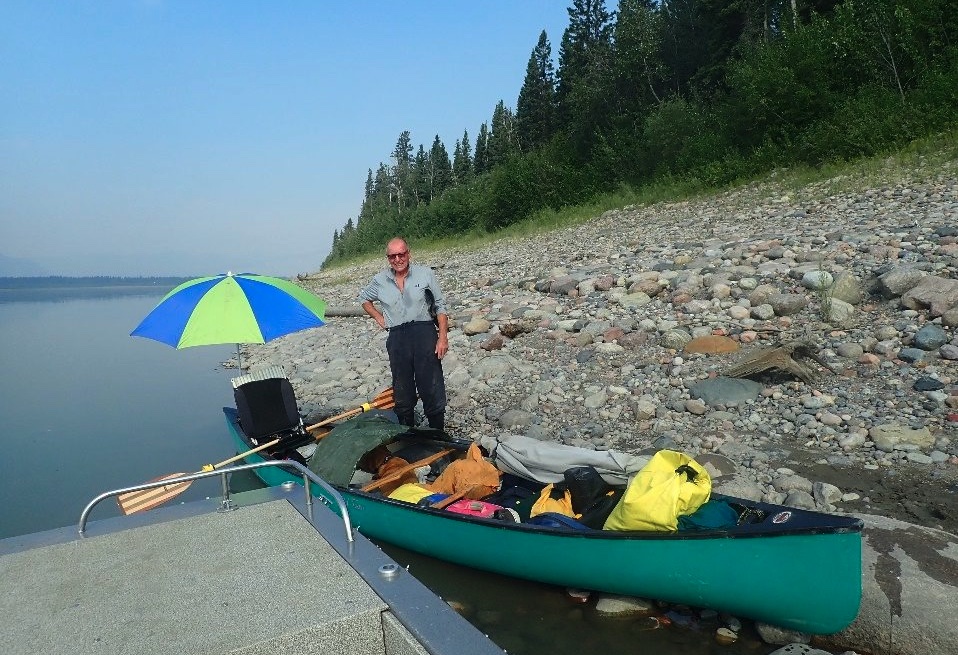Boys volleyball on the verge of becoming an OSAA-sanctioned sport
Published 8:15 am Thursday, January 2, 2025

- A few members of the Summit boys volleyball team stand together during practice at Seven Peaks School in Bend. Pictured, from left, Aiden Woods, Eddie Archer, Beckett White, Anand Groves and Brecken Murphy-Primus.
Just a short couple of years ago, the boys high school volleyball scene was only a handful of Portland-area schools competing against each other just for fun.
Now, boys volleyball is on the verge of becoming a fully sanctioned sport by the Oregon School Activities Association where it would get the same treatment as football, basketball, track and field, and many more high school sports.
“It’s a dream come true, especially for a lot of the players,” said Summit High School sophomore Aiden Woods, who is in his third year of playing club volleyball and was part of the Storm’s state title winning team a year ago. “Even though it is a smaller sport and we don’t have the biggest crowds, you feel like you are playing for a bigger purpose.”
This upcoming spring, boys volleyball will be in its second year of what the OSAA calls an “emerging activity.” An emerging activity is a sport that has the potential to become a sanctioned sport after a two-year evaluation process, according to the OSAA.
In October of 2023, the OSAA delegate assembly voted to approve boys volleyball as an emerging activity and last spring boys volleyball had its first season.
There are already some distinct changes as boys volleyball enters the final year of the process. Perhaps most notably, boys volleyball has its own page on the OSAA’s website and is listed under each school’s activities page — just like every other sport.
The season, which begins in March, will have 16 play dates, 32 matches and a culminating event (essentially a state tournament).
“To have that and be able to say: ‘I’m playing for my school, this is my team,’ you have that sense of purpose,” Woods said.
One thing that has to be proven this spring in order for the state’s high school sports governing body to advance boys volleyball from emerging activity to sanctioned sport: growth.
“What we need to see is growth,” said Kyle Stanfield, OSAA chief operating officer. “From year one to year two, we need to see growth with more schools coming on board and more students being active inside the programs.”
There is a 50-school threshold that the sport needs to meet to be considered a sanctioned sport by the OSAA’s Delegate Assembly. As of Dec. 12, 46 schools are already signed up to play and are listed on the OSAA’s website. Summit, Crook County and Central Christian are the three Central Oregon high schools that have already signed up.
Last spring, there were 52 varsity teams that competed in the Oregon High School Boys Volleyball Association, according to Patrick Gibson, association director. But last year the teams mostly operated as club sports affiliated with high schools.
One of the challenges boys volleyball will face this spring is how the schools will handle adding a new sport into their athletic departments, which means properly funding it, allowing for gym time and balancing Title IX concerns, Gibson said.
“Will the schools actually engage is the question,” Gibson said. “If the OSAA is going to sanction it, they want to know that it isn’t going to dry up and there are only going to be 20 schools. The changes that have happened in the second year as an emerging sport, everything is supposed to run through the school as if it is another sport. They are emulating how it should be treated if it were a sanctioned sport.”
Gibson has been at the forefront of building boys volleyball in Oregon. In 2021, while coaching girls volleyball at Lincoln High in Portland, a couple of his players came to him and mentioned that some of their friends were interested in forming a boys volleyball club and asked if he would be the club’s supervisor. The club began competing against other Portland Interscholastic League schools.
Word spread the following year and a couple of Salem-area schools joined the league and suddenly there were five teams — Lincoln, Franklin, Cleveland, McKay and West Salem high schools— competing in weekend tournaments against one another.
The next year 25 schools were playing boys volleyball.
Now, Gibson doesn’t have to do much leg work to recruit new schools to consider playing boys volleyball. The schools are now reaching out to him.
“That is telling me that it has an energy of its own,” Gibson said.
Once this upcoming season ends, the boys volleyball advocates will make a presentation to the OSAA delegate assembly, which will then vote on whether or not the state will have a new high school sport. That meeting is scheduled for October 2025.
“Being sanctioned means a lot for us because we feel like we will be able to get the recognition for being a real sport,” Woods said. “I think being sanctioned will be amazing. It will make us feel like we are a part of something.”








